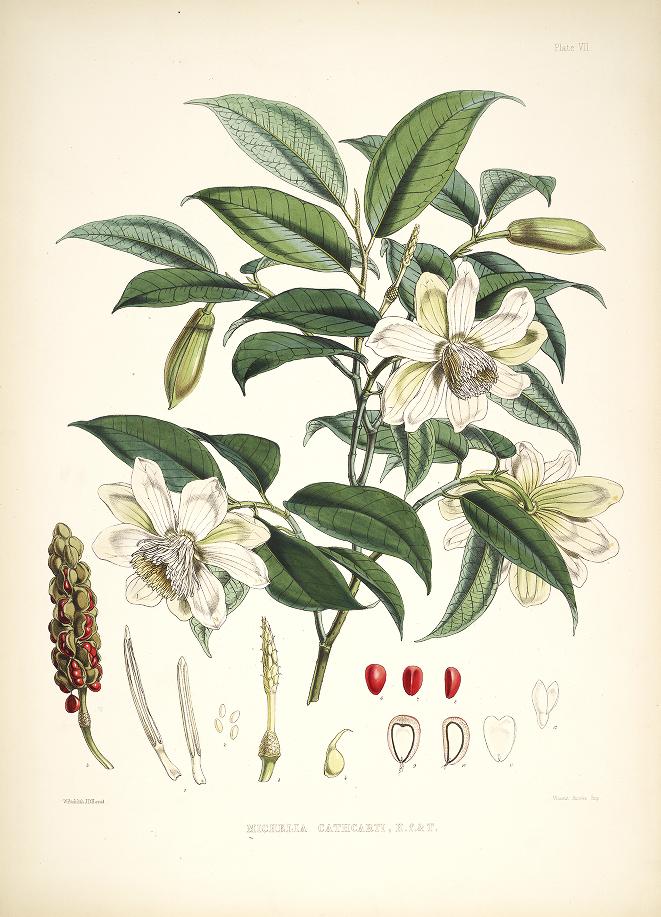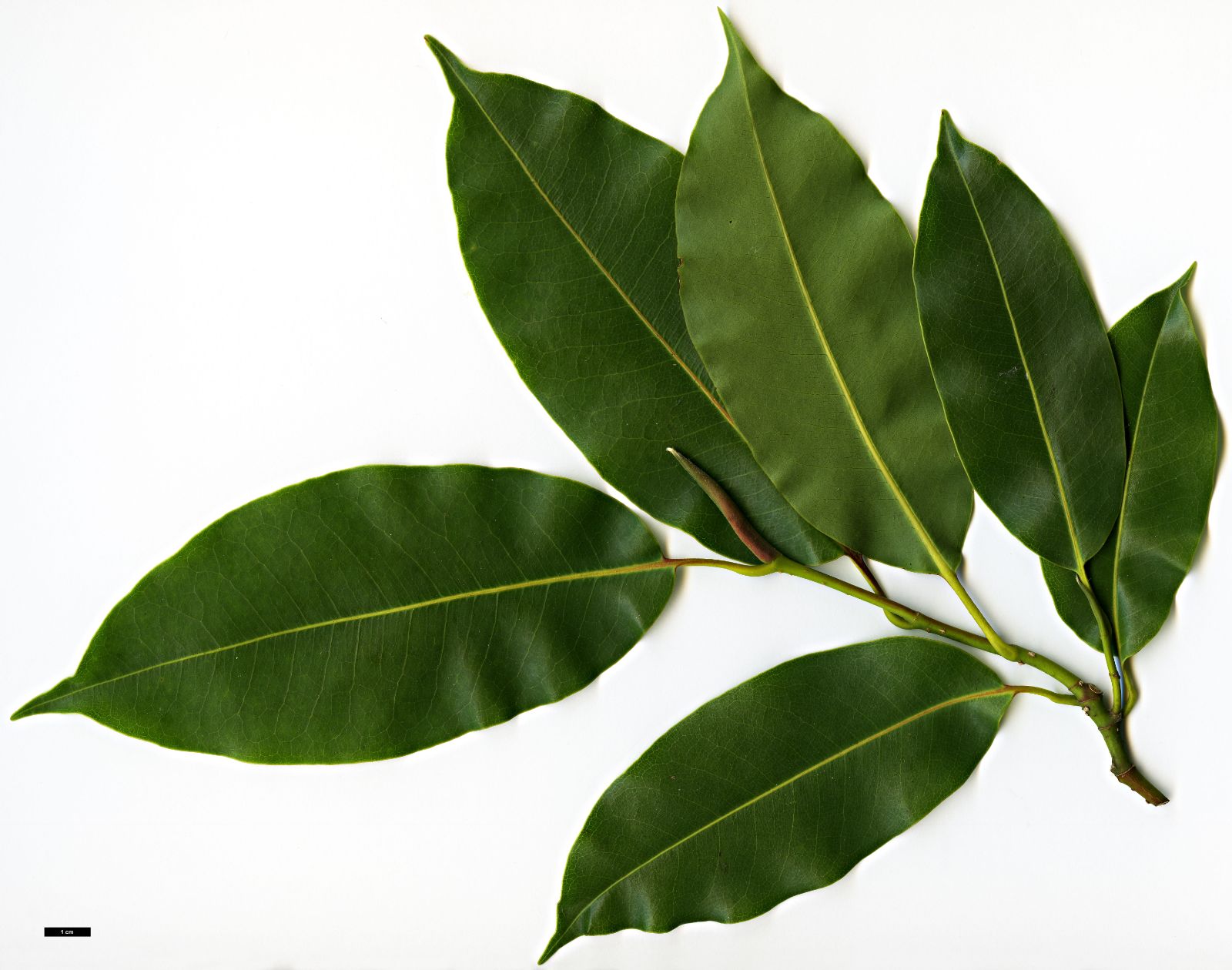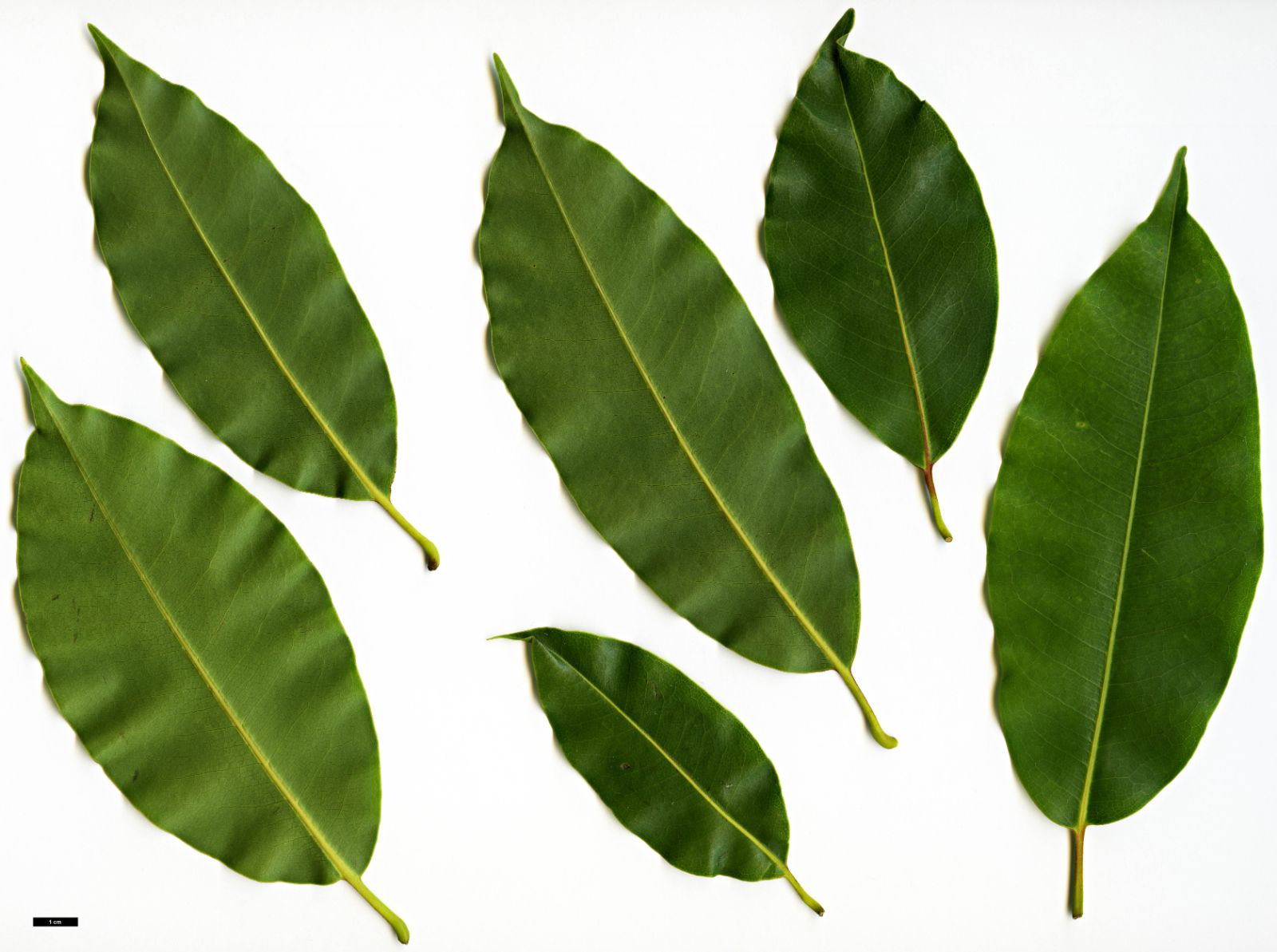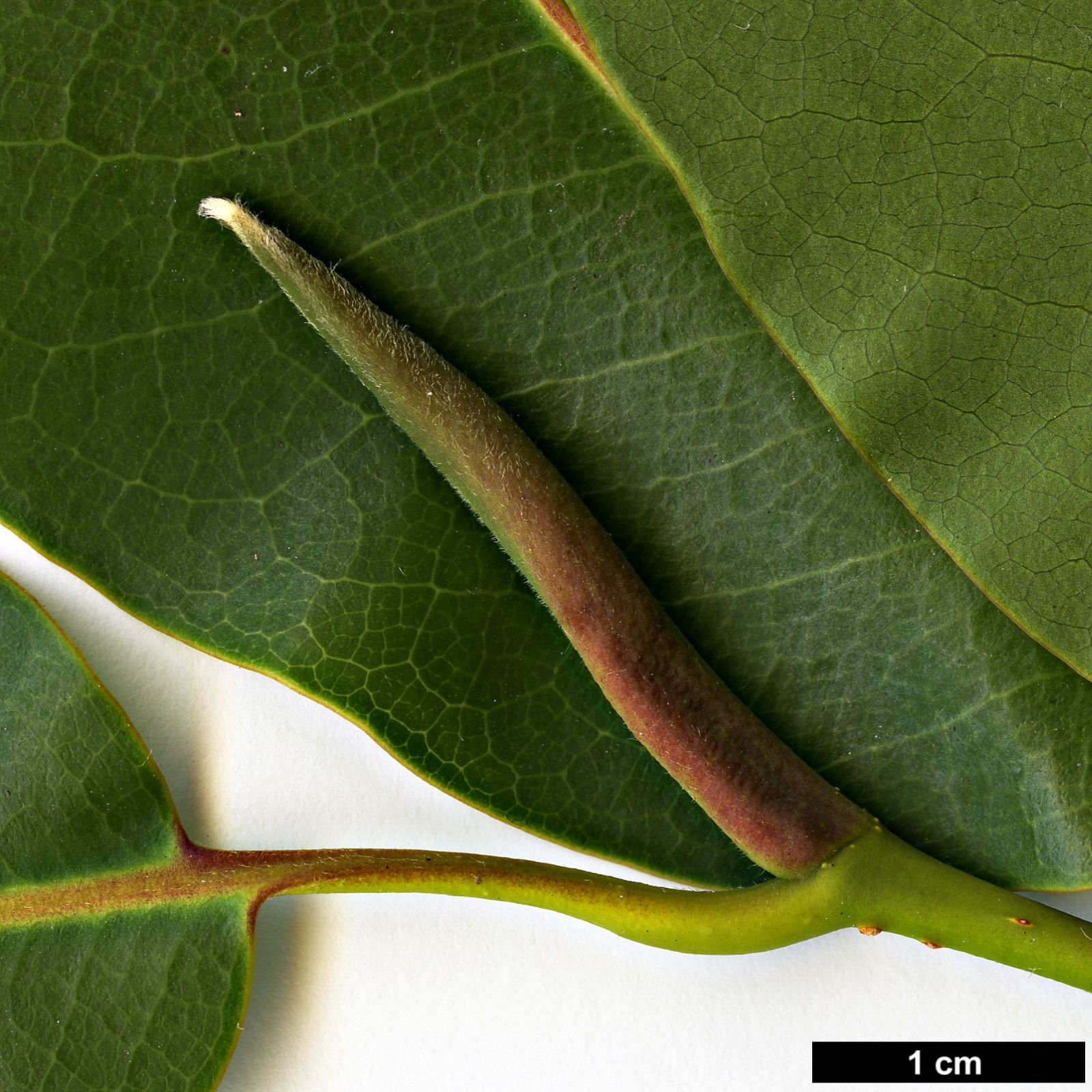Magnolia cathcartii
Sponsor
Kindly sponsored by
The Roy Overland Charitable Trust
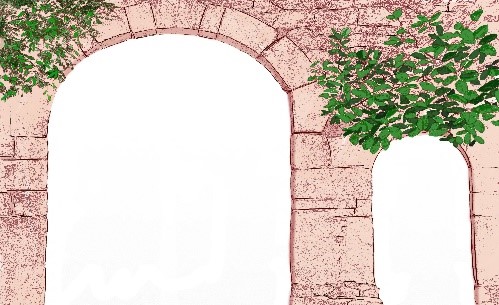
Credits
Julian Sutton (2022)
Recommended citation
Sutton, J. (2022), 'Magnolia cathcartii' from the website Trees and Shrubs Online (treesandshrubsonline.
Genus
- Magnolia
- Section Maingola
Synonyms
- Michelia cathcartii Hook. f. & Thomson
- Sampacca cathcartii (Hook. f. & Thomson) Kuntze
- Alcimandra cathcartii (Hook. f. & Thomson) Dandy
- Aromadendron cathcartii (Hook. f. & Thomson) Sima & S.G. Lu
Other taxa in genus
- Magnolia acuminata
- Magnolia × alba
- Magnolia amabilis
- Magnolia amoena
- Magnolia aromatica
- Magnolia biondii
- Magnolia × brooklynensis
- Magnolia campbellii
- Magnolia cavaleriei
- Magnolia caveana
- Magnolia champaca
- Magnolia changhungtana
- Magnolia chapensis
- Magnolia compressa
- Magnolia conifera
- Magnolia Cultivars A
- Magnolia Cultivars B
- Magnolia Cultivars C
- Magnolia Cultivars D
- Magnolia Cultivars E
- Magnolia Cultivars F
- Magnolia Cultivars G
- Magnolia Cultivars H–I
- Magnolia Cultivars J
- Magnolia Cultivars K
- Magnolia Cultivars L
- Magnolia Cultivars M
- Magnolia Cultivars N–O
- Magnolia Cultivars P
- Magnolia Cultivars Q–R
- Magnolia Cultivars S
- Magnolia Cultivars T
- Magnolia Cultivars U–V
- Magnolia Cultivars W–Z
- Magnolia cylindrica
- Magnolia dandyi
- Magnolia dawsoniana
- Magnolia de Vos and Kosar hybrids
- Magnolia decidua
- Magnolia delavayi
- Magnolia denudata
- Magnolia doltsopa
- Magnolia duclouxii
- Magnolia ernestii
- Magnolia figo
- Magnolia floribunda
- Magnolia × foggii
- Magnolia fordiana
- Magnolia foveolata
- Magnolia fraseri
- Magnolia fulva
- Magnolia globosa
- Magnolia × gotoburgensis
- Magnolia grandiflora
- Magnolia grandis
- Magnolia Gresham hybrids
- Magnolia guangdongensis
- Magnolia hookeri
- Magnolia insignis
- Magnolia Jury hybrids
- Magnolia × kewensis
- Magnolia kobus
- Magnolia kwangtungensis
- Magnolia laevifolia
- Magnolia lanuginosa
- Magnolia leveilleana
- Magnolia liliiflora
- Magnolia × loebneri
- Magnolia lotungensis
- Magnolia macclurei
- Magnolia macrophylla
- Magnolia martini
- Magnolia maudiae
- Magnolia nitida
- Magnolia obovata
- Magnolia officinalis
- Magnolia opipara
- Magnolia × proctoriana
- Magnolia × pruhoniciana
- Magnolia rostrata
- Magnolia salicifolia
- Magnolia sapaensis
- Magnolia sargentiana
- Magnolia sieboldii
- Magnolia sinensis
- Magnolia sinica
- Magnolia sinostellata
- Magnolia × soulangeana
- Magnolia sprengeri
- Magnolia stellata
- Magnolia tamaulipana
- Magnolia × thomsoniana
- Magnolia tripetala
- Magnolia × veitchii
- Magnolia virginiana
- Magnolia × wieseneri
- Magnolia wilsonii
- Magnolia xinganensis
- Magnolia yunnanensis
- Magnolia yuyuanensis
- Magnolia zenii
Tree 25–50 m, 0.5 m dbh. Branchlets slender, dark brown, pilose; buds white-villous. Leaves evergreen, thin and leathery, 6.5–17 × 3–5.6 cm, ovate to elliptic (rarely obovate), upper surface glossy green, lower surface glabrous or villous along the midrib, 12–15 veins on each side of the midrib, margins entire, apex long-acuminate ; petiole pubescent, 0.2–2 cm long, without stipule scars; stipules free, hairy. Flowers solitary, terminal, fragrant, tepals 9–11; outer three tepals oblong, 5.5–6 × 2 cm, pale green; inner tepals obovate to elliptic, white; stamens ~40, white to yellowish green; gynoecium stalked. Fruit clusters spicate, 3.5–4 cm long; ripe carpels 3–16, compressed globose, lenticellate. Flowering May, fruiting August to October (China). Diploid 2n=38. (Chen & Nooteboom 1993; Liu et al. 2004; IUCN 2021).
Distribution Bhutan Myanmar N China Xizang, Yunnan India NE Thailand Vietnam N
Habitat Montane evergreen broadleaved forest, 1200–2800 m.
USDA Hardiness Zone 8-10
RHS Hardiness Rating H3
Conservation status Least concern (LC)
A large, creamy-white flowered, evergreen forest tree with a wide but scattered distribution from the Himalaya to Thailand, Magnolia cathcartii still falls very much into the ‘experimental’ category in Western cultivation.
First described from Sikkim as a Michelia (Hooker & Thomson 1855), the specific epithet commemorates James F. Cathcart of the colonial-era Bengal Civil Service, who commissioned large numbers of illustrations of Himalayan plants (including this species, which grew around his house near Darjeeling – Hooker 1855) by local artists: these heavily informed work by Western illustrators such as Walter Fitch. It stands apart as the only member of Section Maingola (an anagram of ‘magnolia’) to be known in cultivation. It differs from Section Michelia in bearing flowers at the ends of long shoots (as in ‘traditional’ magnolias), and only occasionally on axillary brachyblasts, and in having anthers that dehisce towards the centre of the flower (introrse dehiscence) rather than at the edges (latrorse dehiscence). The impressive list of synonyms it has acquired testifies to the difficulty taxonomists have had in placing it and its close relatives.
The species is as yet poorly known in our area, but is established in New Zealand. A recent collection was made in northern Vietnam by Dan Hinkley and Bleddyn and Sue Wynn-Jones (in 2003, under the number HWJ 874), from large trees growing at 2300 m on Fan Si Pan (Crûg Farm Plants 2007): a specimen in the walled garden at Crûg had reached 2.5 m in 2016 (The Tree Register 2021). HWJ 9953 from the same area first flowered in Vancouver, BC, in 2006 (Wharton 2007); this is apparently now lost, but a 2012 accession from India is recorded in the David C Lam Asian Garden (University of British Columbia 2021). Clearly a quick-growing tree when conditions suit, a specimen planted in 2005 at Tregrehan, Cornwall has flowered, reaching 5 m × 22 cm by 2014 (The Tree Register 2021).

